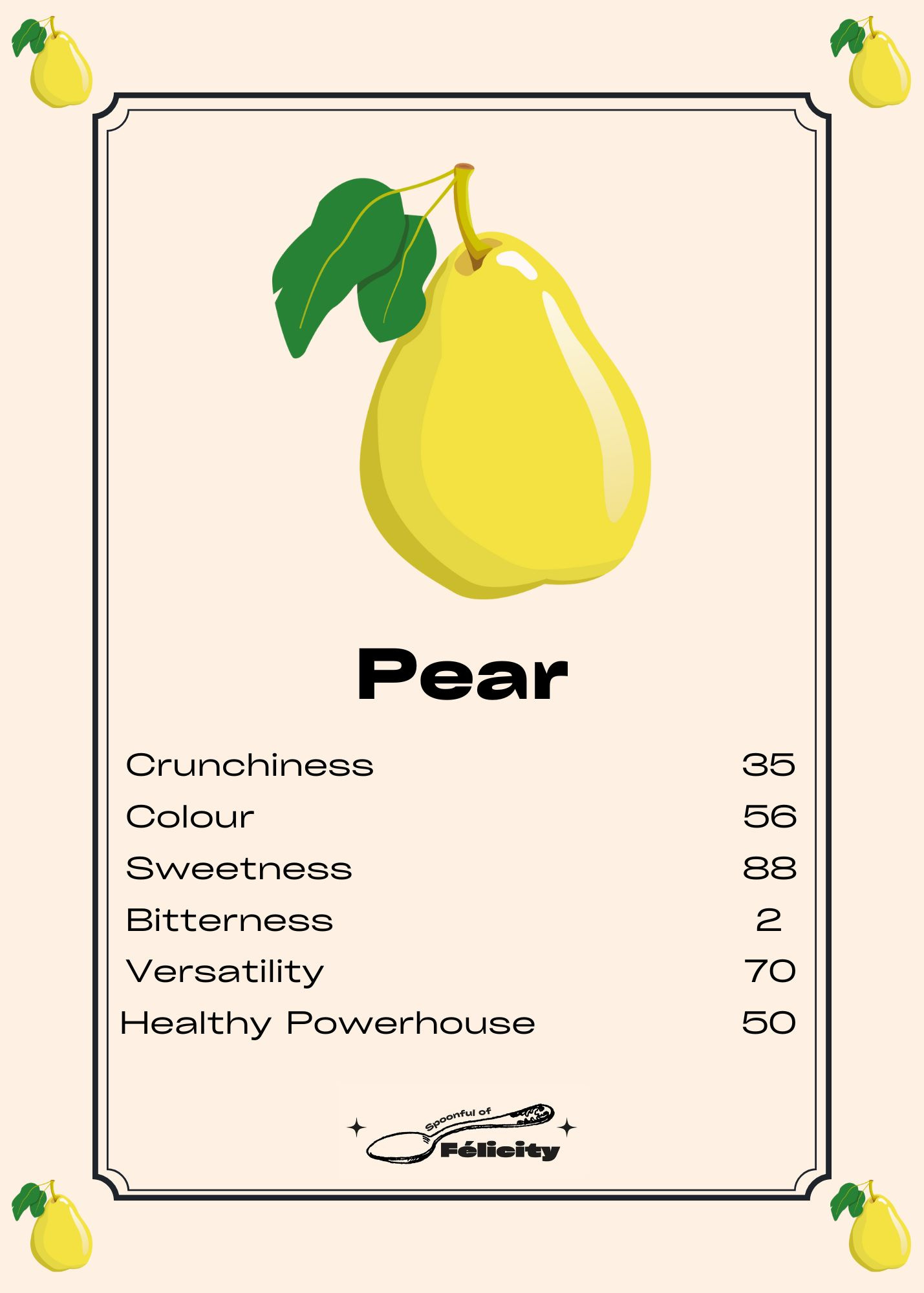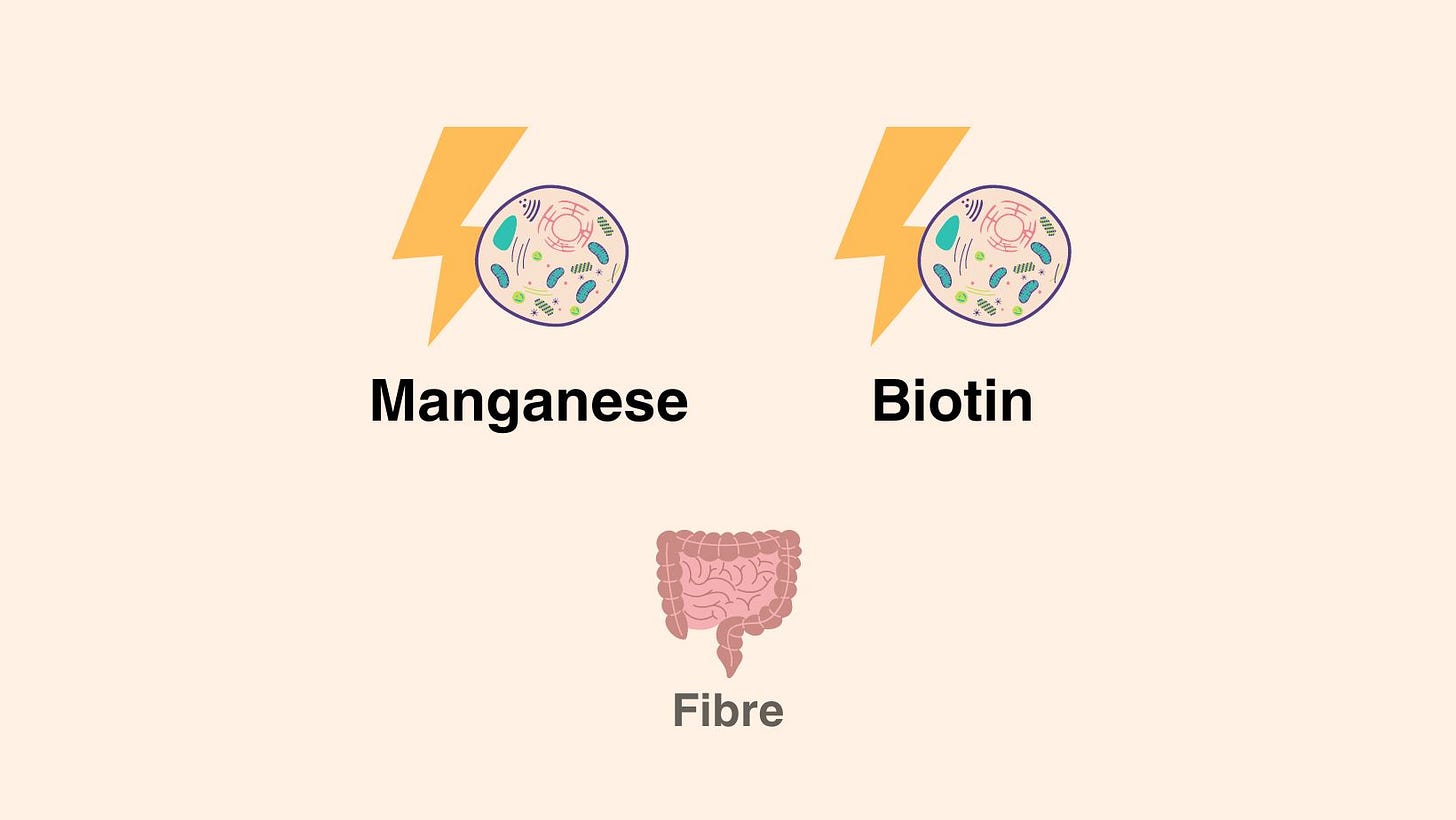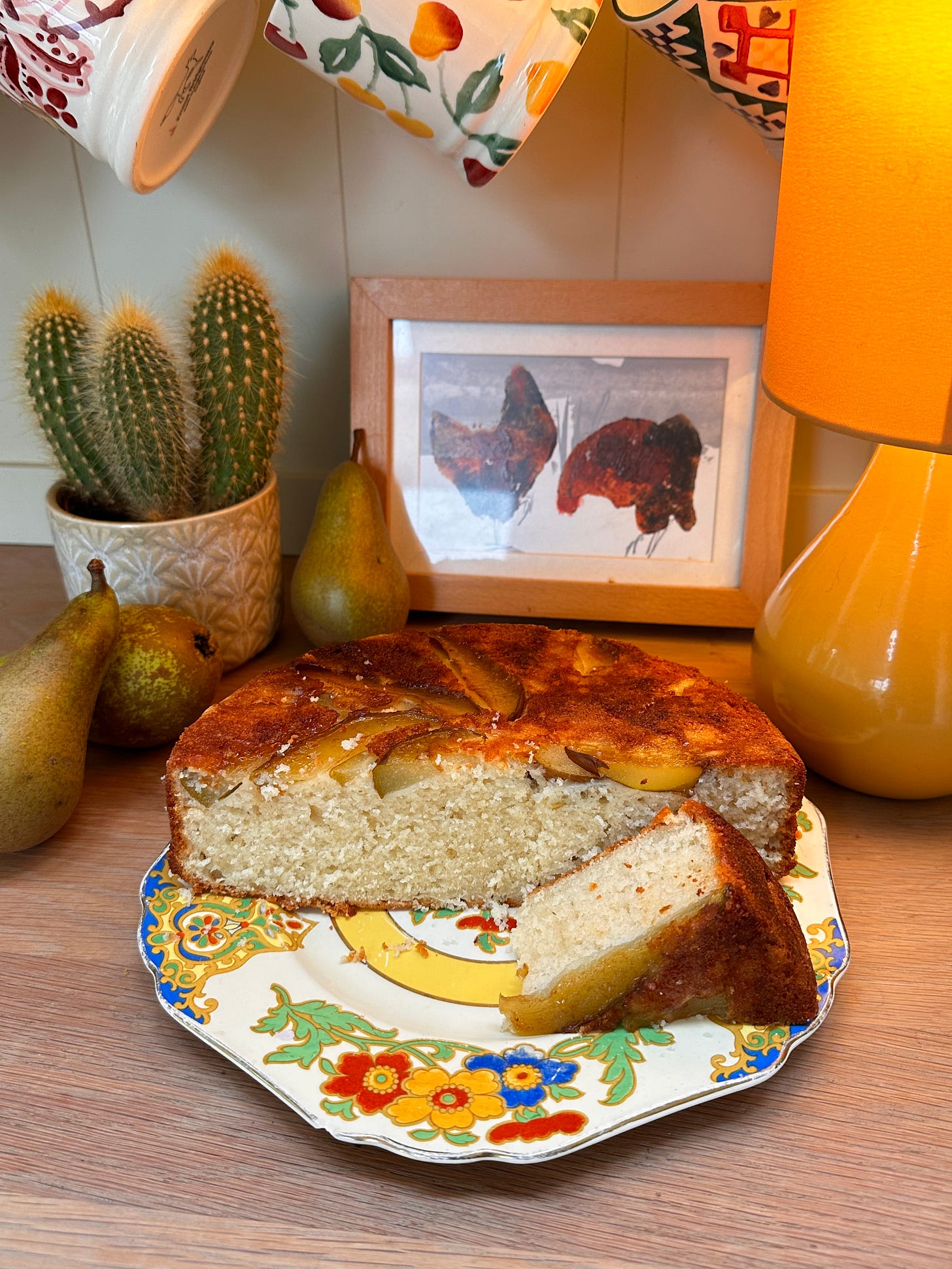HISTORY:
4,000 years ago, somewhere in the Caucasus (South Europe), a wild pear tree was discovered. And everyone went wild for them! We can start by distinguishing them into 2 categories: European Pears and Asian Pears. Both belong to the rose family like best friend Apple, but asian pears tend to be a bit crispier, sandier, and most often round shaped. Asian pears were cultivated in China around 3,000 years ago and were often linked to immortality due to the long lifespan of the tree. By the 17th century there were over 150 cultivars spread across China, Russia and Japan, the latter planting trees in corners of gardens to ward off evil. European pears were cultivated in Ancient Greece and referred to by Homer (800 BC) as the ‘gift of the gods’, and by the 1st century BC Romans had cultivated over 40 different varieties. The further spread of pears in Europe is attributed to the Roman Empire although some sources believe they were already grown in England, used as boundary markers. In the 16th-17th Century, France became the top producer of pears, developing over 900 cultivars. They in fact made up a big part of the Versailles culinary gardens and were the landscapists’ favourite tree. European settlers then brought the pear tree to North America. Across the rest of the world, pears weren’t cultivated until much more recently.
FUN FACTS:
There are now over 3,000 different varieties of pears grown worldwide!
The Williams Pear (very well loved in France) is called the Bartlett Pear in the USA because Enoch Bartlett bought an orchard in Massachusetts and started growing them, ‘without realising’ they already had a name in Europe, so sold them as his namesake. Love that for him!
Before tobacco, pear leaves were smoked… why?! Apparently it does have a relaxing effect. Please don’t try this at home.
Due to it’s ‘womanly’ shape, the Ancient Greeks believe pear to be an aphrodisiac and the fruit was sacred to the goddess of love and desire: Aphrodite.
HOW TO COOK THEM:
Raw: Pear skin is edible and full of fibre so unless you can’t stand the texture, feel free to leave it on. My father always said ‘peel a peach for your friend and a pear for your enemy’, not sure if that’s an actual french saying or just a him saying! Pears are delicious eaten raw on their own or added to yogurt, salads and even on top of toast. They make a perfect pairing with most cheeses. To stop the flesh from browning if you are leaving cut pear to stand for bit, rub them with lemon juice. Sliced pears are also lovely pickled for salads and cheese plates.
Cooked:
Griddle them for a bit of a smoky charred note.
Roast them for a sweet caramelised note.
Stew them into a compote for yogurt, crumble and more.
Add them to cakes and muffins.
Poach them in a flavoured syrup such as chai or hibiscus, or in red wine for a french classic.
Pears pair particularly well with stone fruit, raspberries, apples, grapes and banana; cheeses and in particular Brie or blue cheese; vegetables and in particular cabbages or pumpkins; nuts such as almonds, walnuts and hazelnuts; dark chocolate, rose, ginger, warm spices and honey; alcohols such as sparkling wine, gin, whisky and sweet vermouth; game and in particular duck.
Some of my favourite pear recipes to try:
Roasted Butternut Squash, Pear & Chickpea Salad (coming soon)
MOOD FOOD - FOCUS:
Manganese - is required for brain signalling;
B vitamins - low levels have been linked to tiredness and lethargy;
Low GI - glucose is released steadily from pear, allowing for a sustained fuelling of the brain;
RECIPE:
Upside Down Pear Yogurt Cake
Ingredients:
1 yogurt (125mL - 150mL)
1 yogurt pot of caster sugar
2 yogurt pots of self raising flour
1/2 yogurt pot of vegetable oil
3 eggs
pinch of salt
2 pears
2 Tbs brown sugar
10g butter
Method:
Preheat the oven at 180°C.
Core the pears and slice into thin wedges.
Empty the yogurt into a large mixing bowl. Use the empty pot to measure out the remaining ingredients (white sugar, flour and oil). Crack the 3 eggs into the bowl and add a pinch of salt.
Beat all the ingredients together until the mix is homogenous.
Line an oiled cake tin with baking parchment. Sprinkle 2 Tbs of brown sugar at the bottom and disperse the butter in small chunks.
Lay the pears out on the bottom of the tin. Top with the cake mix.
Bake in the oven for 30-45 minutes or until a toothpick (or spaghetti) comes out clean. The bake time will depend on the depth of the tin you have chosen.
Leave to cool for 2 minutes then transfer onto a wire rack to cool down.
More about this pear upside down cake recipe:
Shortcuts:
Use tinned pears if out of season/remove any chopping needs.
Swap the vegetable oil for EVOO if you want a bit more flavour.
Keys to success:
The key is not over mixing the batter, better have a few lumps then work the flour too much.
I've tried this with all types of yogurt, it always works. Whether it's strained, natural, flavoured you go for it. The flavour of the yogurt will come through in the final cake so you can play it safe with plain, vanilla, honey or go wild with a raspberry!
You can also add extra flavour to the cake mix such as a few Tbs of cocoa powder, a tsp of cinnamon or diced stem ginger.
Health benefits of pears:
They're a good source of:
manganese which enables us to release energy from food and supports cell health;
vitamin B7 (biotin) which supports cell health and is needed to transform food into energy;
soluble fibre which helps lower blood cholesterol, and slows the release of energy from food. It also helps bulk stools with water and serves as a prebiotic, meaning it feeds our gut bacteria for a healthy microbiome.
insoluble fibre - helps to make you feel full, and soften stools for better digestive health. It is also associated with phenolic compounds and therefore antioxidant properties.
Pears contain many other beneficial active compounds, most notably antioxidant pigments such as anthocyanins, beta carotene, lutein and zeaxanthin, and polyphenols such as arbutin, gallic acid, chlorogenic acid and syringic acid. But all these will definitely vary dependent on the pear variety! For instance a red blushed pear will have more anthocyanins than a green one.
Beta carotene is an excellent free radical scavenger, playing a part in protecting body and cells from age-related diseases.
Lutein - has been proven to support eye health. It may slow down the affects of age-related vision loss and cataracts. Its anti-inflammatory properties may also support cognitive function and a decreased risk of cancers and cardiovascular diseases.
Zeaxanthin - also acts as an antioxidant in our eye's retina, preventing macular degeneration. Helps prevent cancer like all other antioxidants but also protects your eyes from ageing, protects your skin from UV, and some research indicates it may be beneficial to cognitive function.
Gallic acid - an antioxidant with anti-inflammatory properties which has also been shown to support heart health.
Chlorogenic acid - an antioxidant which therefore scavenges free radicals, reducing oxidative stress, reducing the risk of certain cancers, cardiovascular diseases and physical signs of ageing. Chlorogenic acid also has strong anti-inflammatory properties which contribute to brain and heart health. Early studies show promising affects on type 2 diabetes symptoms and preventing strokes.
Syringic acid is a free radical scavenger and therefore has antioxidant, and anti-cancer properties, it also reduces inflammation.
Sorbitol - which gives pear some of its sweet taste. This sugar alcohol has a low GI and is not absorbed in the small intestine, therefore it can reach the large intestine to feed some of our gut bacteria which in turn supports body function and mental health. It also has some laxative effect and therefore should not be consumed excessively.






